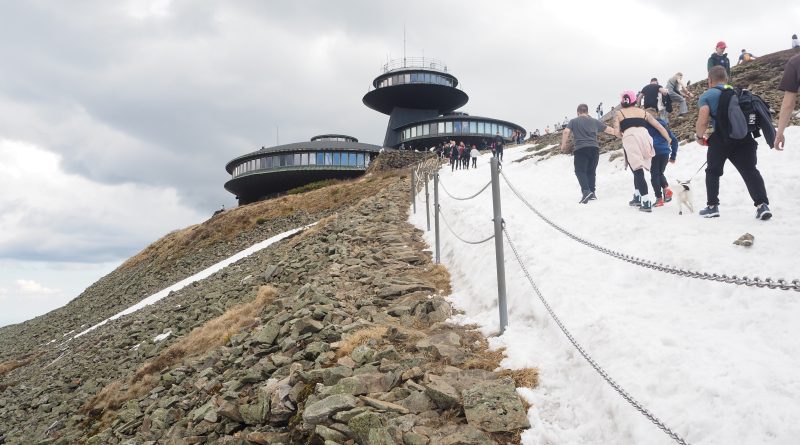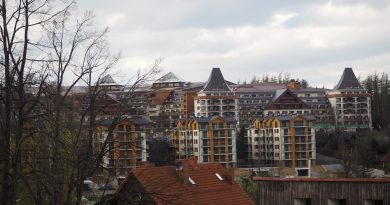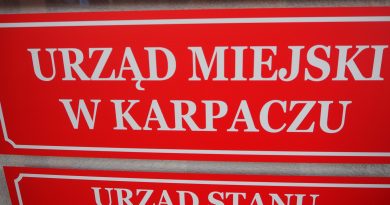Climate Watchdogs on the Periphery Explain: Why Do We Need Climate Strategies?
The Bender Society is conducting the project “Climate Watchdog for Peripheries.” The initiative is financially supported by the PROTEUS program, conducted by the Transatlantic Foundation, the European arm of the German Marshall Fund of the United States.


The project is co-financed by the European Union. However, the views and opinions expressed are solely those of the authors and do not necessarily reflect those of the EU or the European Education and Culture Executive Agency. Neither the EU nor the granting body can be held responsible for them.
Eight Lower Silesian municipalities with populations under 20,000 were selected to examine climate issues: Jedlina-Zdrój, Kamieniec Ząbkowicki, Karpacz, Malczyce, Mirsk, Szklarska Poręba, Świeradów-Zdrój, and Walim. The flood-affected town of Lądek-Zdrój was also included in the project.
Based on extensive project activities—including document and data analysis, study visits, expert interviews, and a resident survey—activists created a report with recommendations and proposals for developing local climate strategies. This article explains why they took this approach and addresses common concerns.
Why Local Climate Strategies Matter
As climate change accelerates, local governments, including rural and semi-urban municipalities, must go beyond traditional models focused solely on economic or infrastructure development, separate from environmental considerations. Climate now directly influences residents’ quality of life, safety, public health, and local economic resilience.
Climate change isn’t a distant issue—it’s already affecting our lives. Heatwaves, droughts, severe storms, and flash floods impact even small municipalities like those included in the Bender Society’s project. Increasingly frequent and intense heatwaves pose risks to children and the elderly, especially in towns lacking greenery and shade. Farmers are struggling with drought: water shortages, lower yields, and increased fire risks.
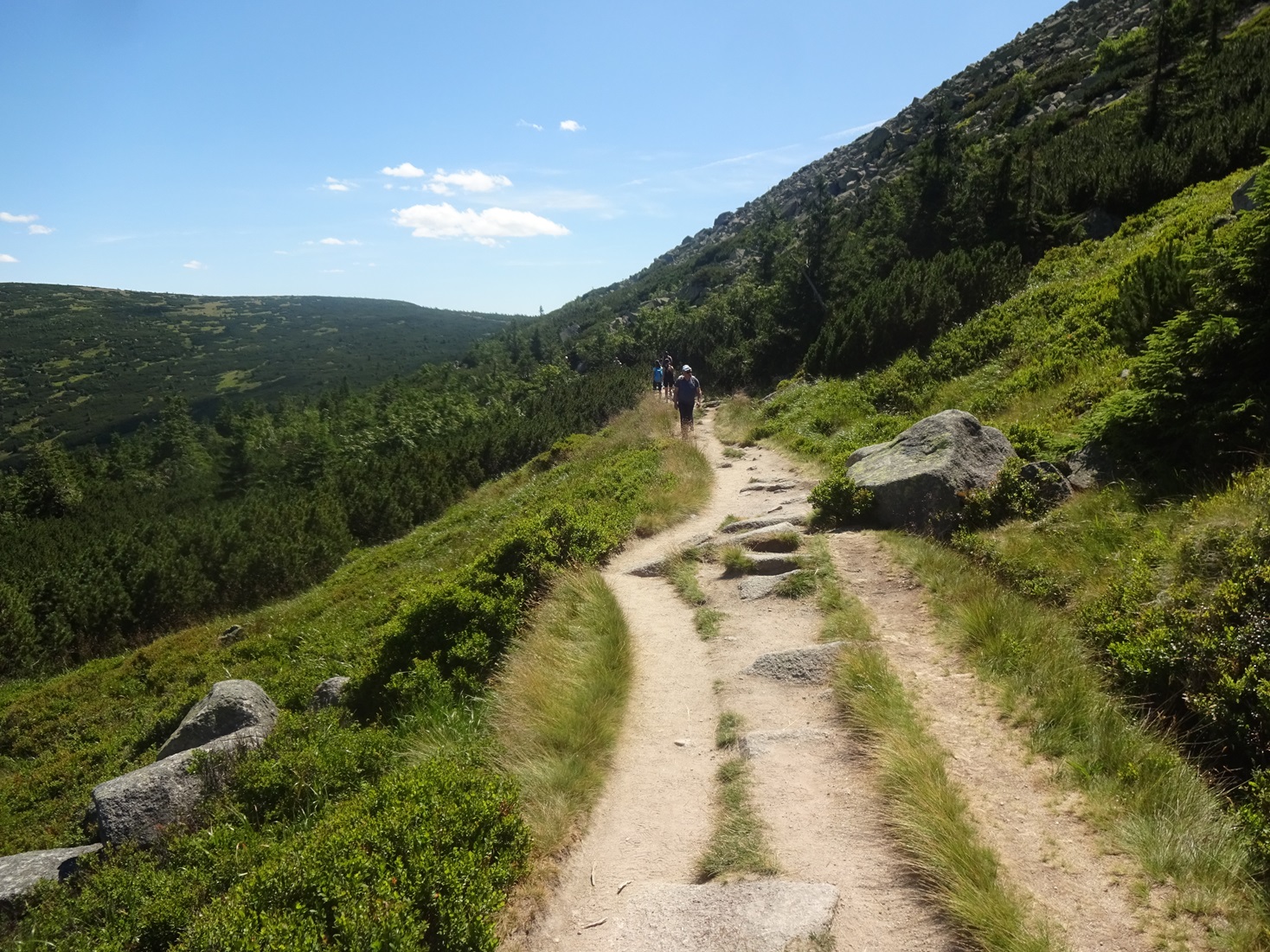
Storms and heavy rains lead to floods, damage infrastructure, and cause costly losses for residents. That’s why we need concrete, localized climate strategies—not only to reduce carbon emissions but also to prepare for these threats.
Such a strategy doesn’t have to be vague or overly broad. It can include tangible measures like greening public spaces, water retention, energy efficiency improvements in buildings, support for low-emission transport, and climate education. Adaptation means solving specific local problems—like heat, flooding, noise, and smog—not discussing abstract concepts.
Climate action also improves local safety, health, and quality of life. A climate strategy is an expression of responsibility. Intergenerational solidarity demands we protect the environment for future generations.
See also: Climate Watchdogs Score a Win on the Periphery! Świeradów-Zdrój to Develop Environmental Plan
Additional Benefits of Climate Policy
Many climate-related efforts, such as moving away from coal, promoting renewables, reducing car traffic, or insulating buildings, also reduce air pollution. Cleaner air means fewer illnesses (especially in children and the elderly), lower healthcare costs, better everyday comfort, and increased appeal for new residents.
Climate strategies that promote public transit, cycling, walkable areas, and more green space also reduce traffic noise. Studies show that noise contributes to cardiovascular disease, impairs children’s concentration, and worsens sleep quality. Cutting noise is an investment in both physical and mental health.
Vegetation, especially trees, cools the environment by providing shade and through transpiration. In shaded areas, pavement can be up to 15°C cooler than in the sun. Greenery acts as a natural air conditioner—crucial during heatwaves—for protecting vulnerable groups like seniors, children, and those with chronic illnesses.
Vegetation also reduces noise, improves aesthetics, and enhances the attractiveness of a town as a place to live, work, or relax. Trees and shrubs serve as natural air filters.
See also: Train Returns to Karpacz in a Month. Climate Watchdogs: Just the Beginning of Sustainable Mobility
What Are Local Governments Worried About?
Some municipalities fear that developing a climate strategy will be too expensive. Yet many actions can be funded from external sources: EU funds, national climate programs, or private partnerships.
Officials may worry that the process is too complex. But many tools, guides, and expert support options are already available, including from the Ministry of Climate and Environment or nonprofit organizations.
Local politicians may underestimate the importance of their municipality. Yet, local communities are often the most directly affected by climate impacts—and they hold the greatest potential for change.
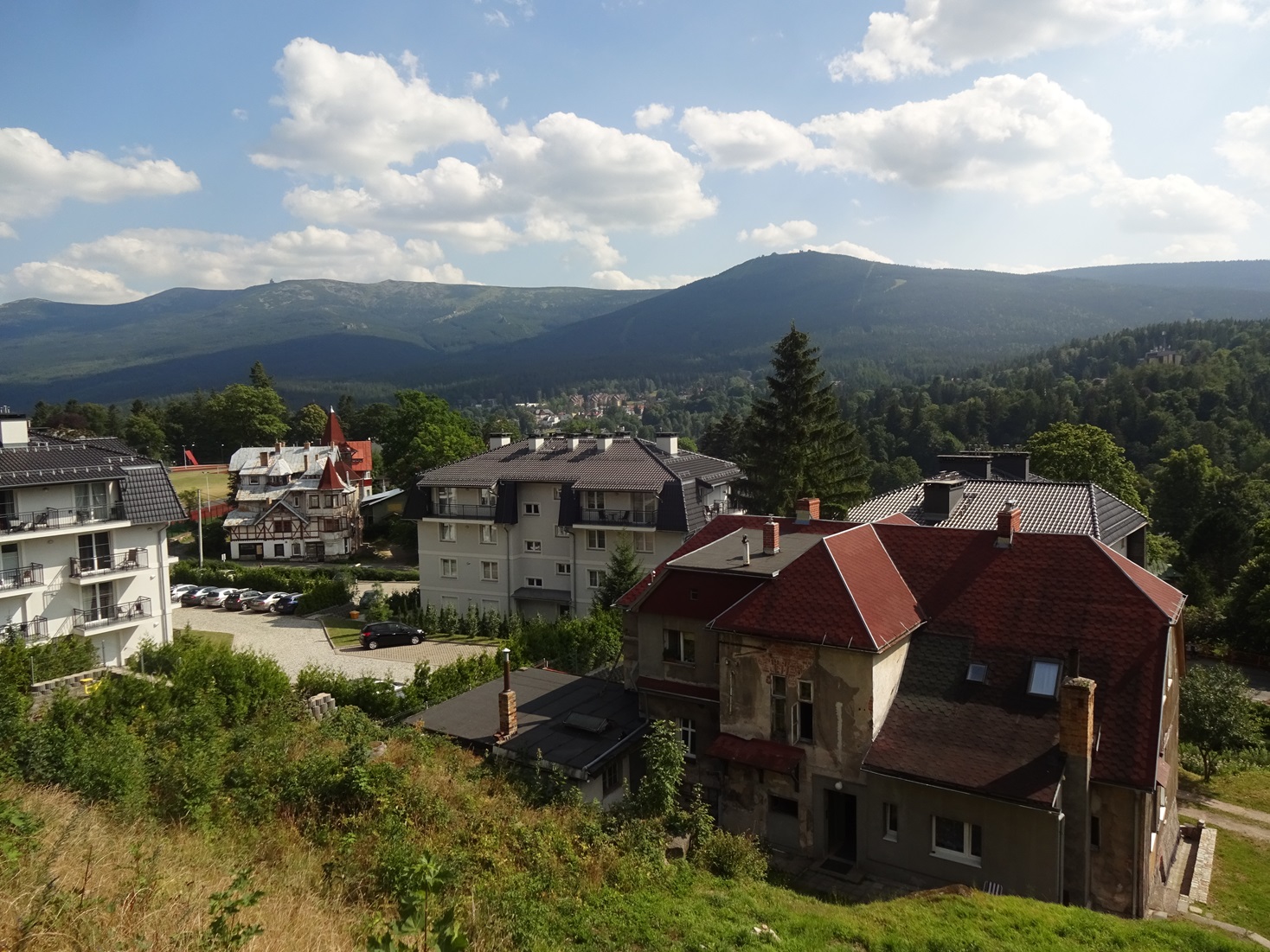
Smaller municipalities often lack staff with expertise in climate adaptation or sustainable planning. Officials may fear they can’t create or implement a quality strategy. They worry it might become just another paper document with no real impact. To address this, cross-municipality partnerships and support for NGOs are essential.
Some municipalities feel left to fend for themselves. Uncertainty about future EU funding, vague legal regulations, and lack of clear national guidance cause concern that strategies may be written but never funded or implemented. Still, local governments do have a say in regional and national policy.
Engaging the Community in Climate Issues
Involving residents, NGOs, and local businesses in creating climate strategies is key to success. It’s not just about building public support—it ensures the strategy meets real community needs. Dialogue, openness, and collaboration are essential.
The next step is to invite different groups to co-create the document. Residents, NGOs, and business owners bring valuable, practical insight into how daily life works in the municipality. People know which areas flood, which buildings are poorly insulated, and where more green space is needed.
Open workshops, public consultations, and submission forms, both online and offline, should be used. Responding to concerns and publishing summaries of feedback and responses is also important.
Non-profit organization, especially those focused on ecology, education, or social services, can be natural partners in planning and implementing climate actions. Local businesses can also get involved through renewable energy investments, low-emission transport support, or education initiatives. Broader collaboration can also boost funding chances. Granting institutions often reward participatory projects that include many stakeholders.
It’s equally important that community involvement continues after the strategy is adopted. Residents and civil partners should also be part of implementation and progress monitoring. This shared responsibility helps ensure the strategy becomes more than an official document—it becomes a community pact for the future.
Reliable Climate Information
The local process should start with solid information. Residents need to know that a strategy is being developed, what it covers, why it matters, and what the data shows. It’s not enough to post an announcement on the municipal website, active communication is essential: public meetings, presence at local events, social media campaigns, and materials in plain language.
Reliable information is key to involving people. It must be clear, relevant, and locally grounded.
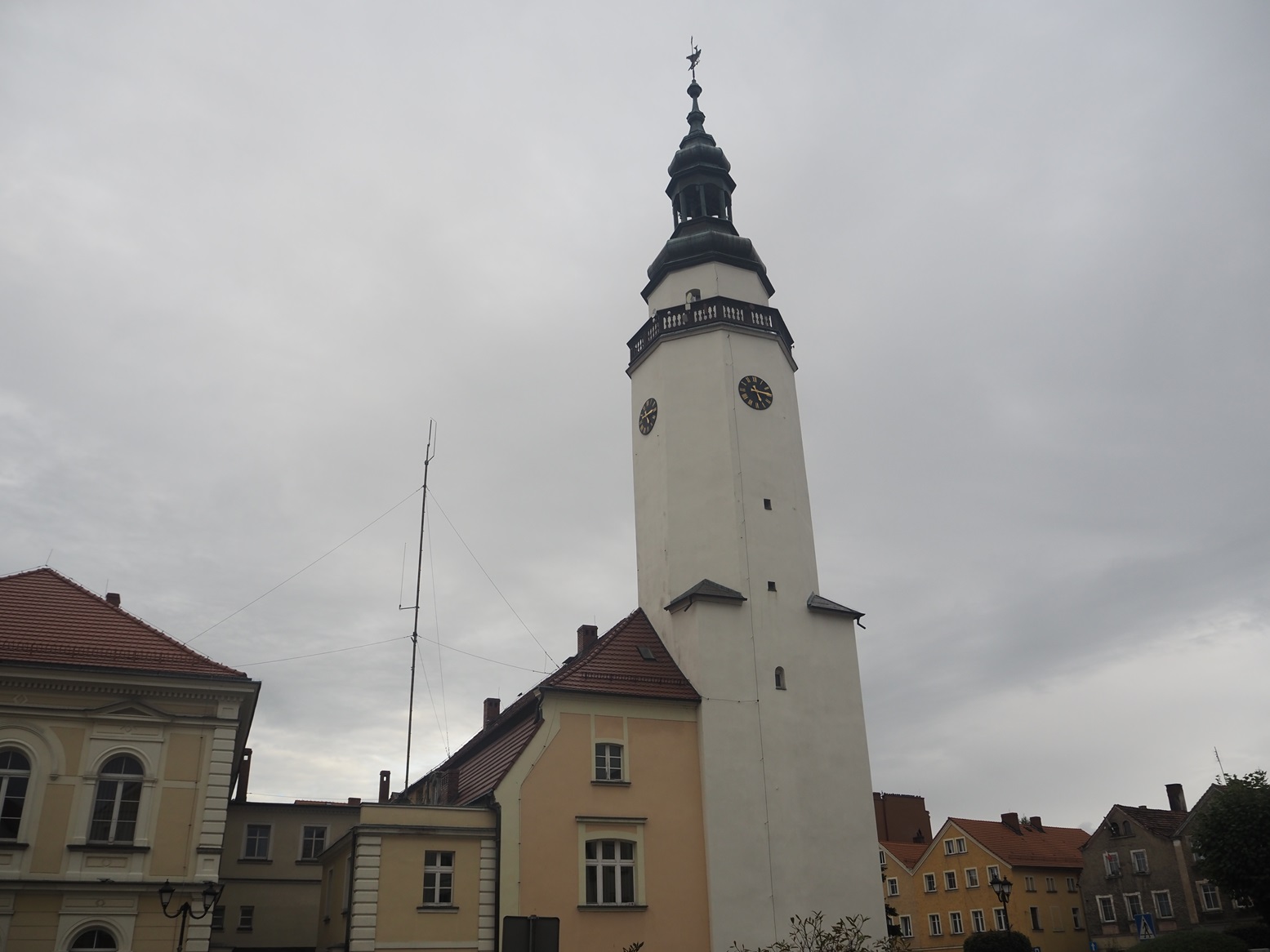
People need to understand what a climate strategy is, why it matters, and what outcomes it may bring—positive or challenging. It must be shown that this is not just an abstract ecological agenda, but a practical plan that affects everyday life: home comfort, flood protection, energy bills, air quality, land use.
Local climate risks should also be presented transparently, using data and local observations, such as increasing heatwave days, drought in agriculture, flood zones, or poor winter air quality. Global warming must be linked to its local reality. Forecasts should also be included where possible.
How Climate Messaging Is Delivered Matters
The format of communication is just as important as the content. Messages should be free of official jargon and technical terms. Visuals—maps, charts, infographics, videos—are often more effective than text. When numerical data is available, it should be simplified: trend graphs, flood damage summaries, energy use comparisons.
Information should be shared through many channels to reach different audiences—social media, local websites, posters and flyers in public places, community meetings in villages, schools, or community centres. Materials for children and youth are also valuable, such as workshops or school sessions.
Reliable communication also means honestly addressing difficult issues, like changes to daily habits, financial costs, or restrictions (e.g., on tree cutting or stove burning).
Most importantly, communication must be ongoing, not one-time. People forget, misunderstand, or change their minds. As the strategy is implemented, data should be updated, goals reinforced, and progress – and setbacks-clearly reported.

